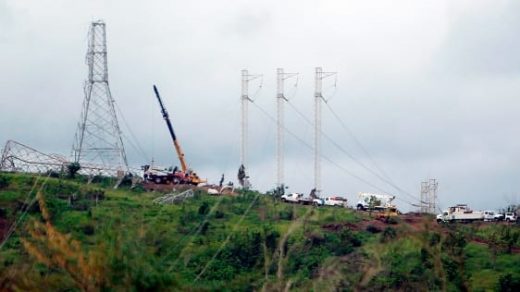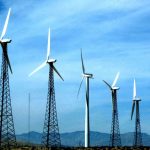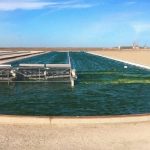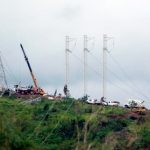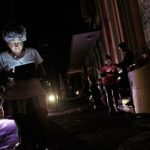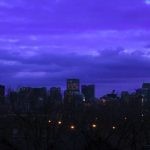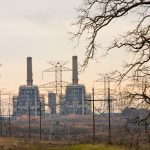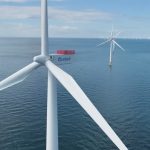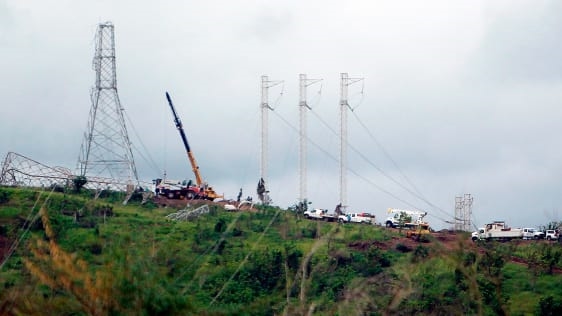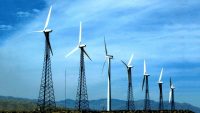Can Puerto Rico Be The Model For A Renewables-Powered Energy System?
In the small Puerto Rican town of Loíza, after Hurricane Maria took out the power grid, residents started washing clothes in a local river–filled with bacteria that then made many people sick. But at a local church, a new solar microgrid now powers donated laundry machines, along with a refrigerator for food and medicine and outlets for charging phones.
The microgrid–a combination of solar panels, battery storage, and other equipment, completed last week–is one of 15 that the battery-storage company Sonnen is rapidly deploying with partners over the next several weeks to respond to the disaster on the island, which is still mostly without power more than a month after the hurricane. Like another microgrid that Tesla is building next to a children’s hospital in San Juan, it’s a renewable alternative to the diesel generators that are also in use. But it’s also one piece of what could become a much more renewably powered grid for the entire island.
The case for a shift to more renewables seems clear. Sunshine is more abundant in the Caribbean than in California or Spain. The amount of wind is competitive with states like Texas, which leads the U.S. in wind energy production. New renewable energy is affordable to build, and could help cut electric bills in a place where residents have been paying twice as much as Americans who live on the mainland.
Still, the local utility has resisted solar and wind in the past. A renewable energy law passed in 2010 required Puerto Rico to get 12% of its electricity from renewable sources by 2015; That year, the utility was only at around 3%. “They were flagrantly out of compliance,” says Cathy Kunkel, an energy consultant for the Institute for Energy Economics and Financial Analysis. The utility, which was also heavily in debt, was pushing to invest millions in natural gas instead.
But the hurricane may have altered that direction. “I think one of the things that has changed dramatically as a result of the hurricane is an interest by private solar developers in getting into Puerto Rico,” she says. “That interest from private capital in getting involved is one of the crucial pieces towards shifting the political landscapes in Puerto Rico around this issue . . . [the utility] has not been able to attract private capital for its investment plans, and so now the fact that there are private solar interests that are coming in and attempting to assist with the rebuilding could make a huge difference.”
Sonnen made its plans to help the island as Hurricane Maria approached. Through a newly formed foundation, the company is funding microgrids to power key services–like the laundry machines–in locations that most need help. It wants to build a couple of hundred of the microgrids across the island.
“In the next natural disaster that happens, that’s pretty inevitable, the bottom line would be that you would have this more resilient humanitarian footprint that is pretty much ready for people to go to,” says Blake Richetta, senior vice president and head of U.S. operations for Sonnen. “They would know there’s a microgrid at this church, this community center . . . and they could go get whatever they need: food, water, medicine, clean clothes.”
On a larger scale, the company, which sells battery storage systems to homeowners, envisions that rebuilt homes could also rely on solar and battery storage connected to a new grid. Of the Puerto Ricans that can afford it now, some are already installing the systems, which can operate while the grid is still down. Prior to the hurricane, the company had installed only around 20 systems on the island. Post-hurricane, orders have increased 1,000%, and the company is currently shipping roughly 30 new systems a week.
Sonnen believes that if the government incentivizes new homes to include solar and battery storage, those homes could be connected to create “virtual power plants” that use software to support the larger grid. The company is currently working on a project to build nearly 3,000 homes in Arizona that use a similar system. “It makes it so you build your own clean energy, use it yourself, and you stabilize the rest of the grid with your battery,” says Richetta. Tesla and others could potentially build something similar.
A new virtual power plant would be controlled both by solar tech companies such as Sonnen and the local utility. “Sonnen would manage the software platform while providing PREPA with full access to control the fleet of ‘sonnenBatteries’ on a daily basis,” says Richetta. “If this occurred, utility bills would likely go down.” Privately owned generation already exists on the island, both in renewable projects and an existing coal and natural gas plant. “As long as the sales of power are regulated by the Puerto Rico Energy Commission so that consumers are not ripped off, [new privately-owned renewable power] would not be a problem,” says Kunkel.
For renewable energy companies, the island could become a unique place to prove how their technologies can work on a large scale. “This would become a laboratory,” Richetta says. “All of the companies that are involved would be able to have significant returns simply because they would have proofs of concept vastly superior to what they have in the mainland U.S. or the rest of the world. They would be able to say ‘yes, this works,’ and so there’s value there.”
Microgrids on individual homes could be connected to microgrids at businesses, as well as to large-scale solar and wind farms. Having power coming from many places, rather than a handful of power plants, would help make the grid more resilient in future hurricanes.
“I think as we’ve seen from the recent storms, a grid that has a few large plants mostly in the south of the island and some key transmission lines creates a lot of risks for long-term disruption from major storms,” says Roy Torbert, a principal for the Islands Energy Program at Rocky Mountain Institute, a nonprofit that works to accelerate the shift to renewable energy.
The challenge, in Puerto Rico, is political, not technical. The Energy Commission, an independent body that was created in 2014 to try to help solve some of the Puerto Rico Electric Power Authority’s many problems, is now looking into how regulations could help deploy private capital for solar and microgrids, but the commission is politically unpopular. Still, the governor, who tweeted to Elon Musk that Puerto Rico could be a flagship solar project for Tesla, seems interested. After the shady contract with Whitefish Energy to rebuild the island’s power lines was canceled after drawing heaps of negative news attention, plans for rebuilding the grid are still open.
“I think at some level it feels like they almost have to [move to renewables], and it’s just sort of a question of how painful and expensive the transition will be,” says Kunkel. “Markets are moving towards renewables, the cost of renewables are significantly cheaper . . . so economically it’s a good investment in Puerto Rico.”
For the bankrupt utility and local government, renewables could help the economy recover more quickly; the utility currently spends more than $1 billion a year on fuel to oil and gas companies located off the island.
“The buildout of renewable energy in Puerto Rico would keep more money on the island and could be an important tool in helping to revitalize the economy,” she says. “From my perspective, it’s going to be much harder and slower for the Puerto Rico economy to recover if the electrical system is siphoning more than $1 billion a year out to oil and gas interests.”
Fast Company , Read Full Story
(75)

